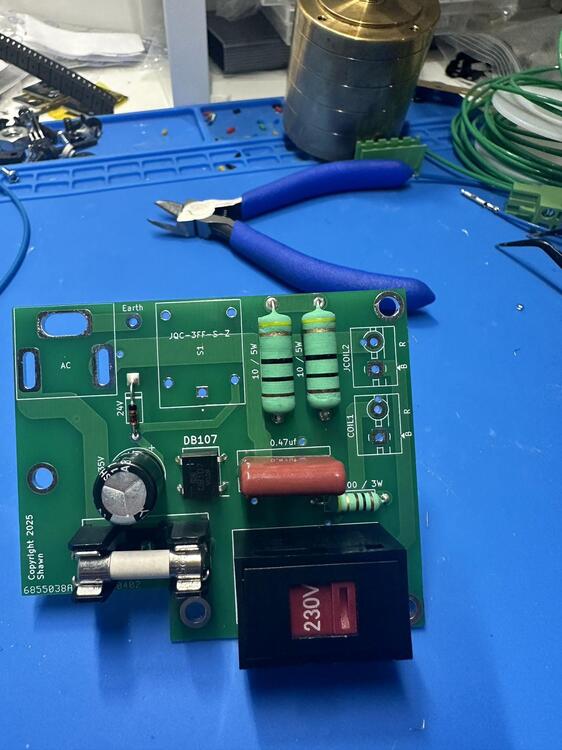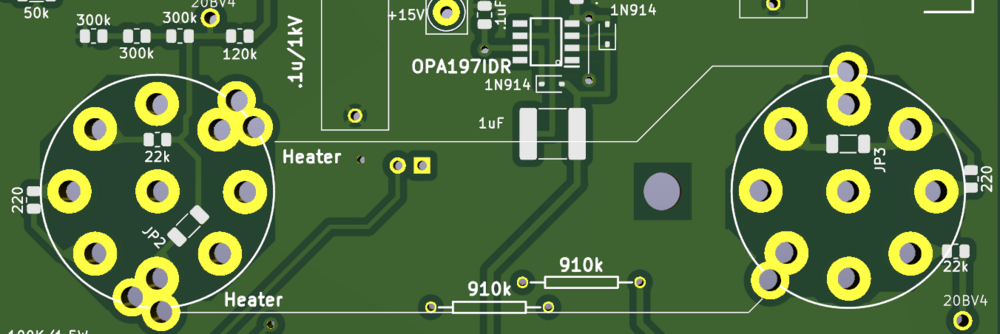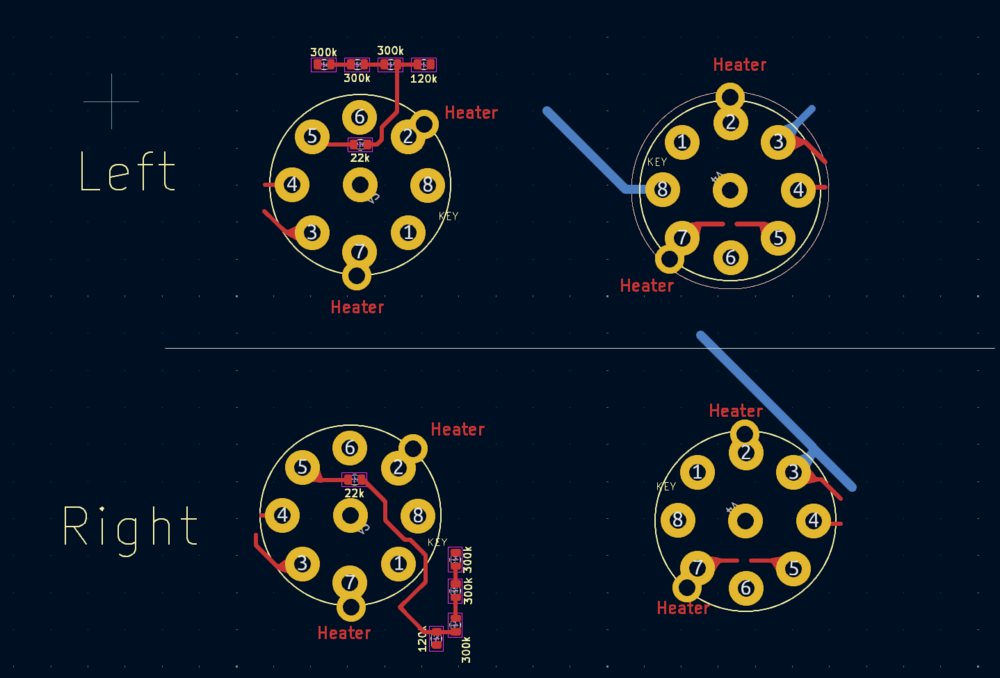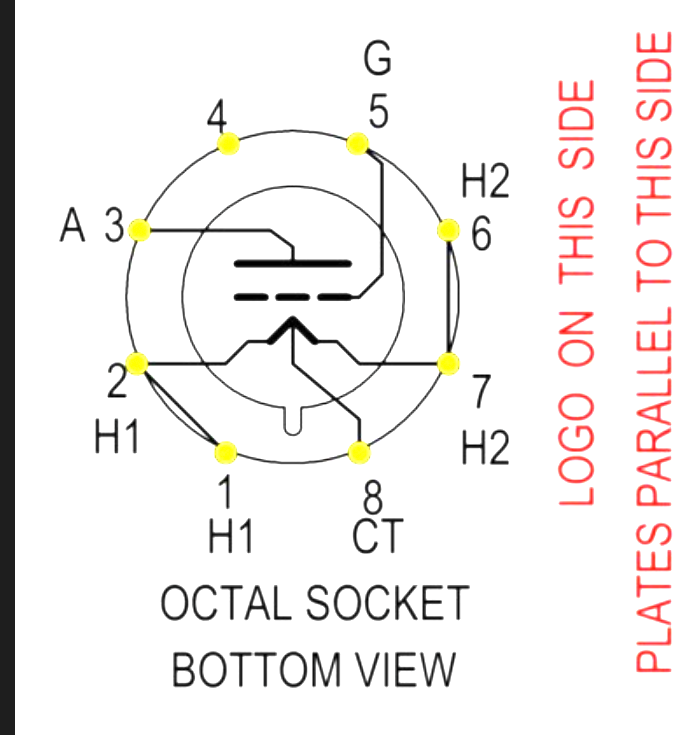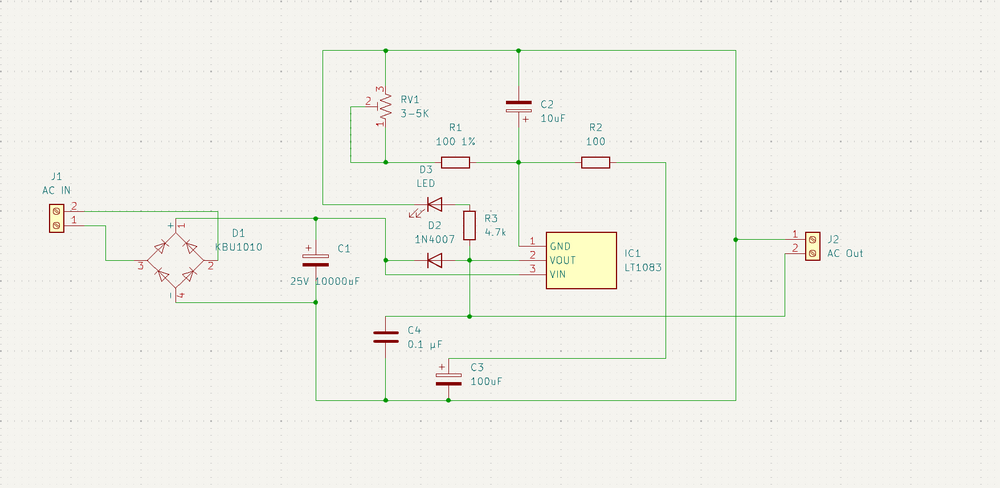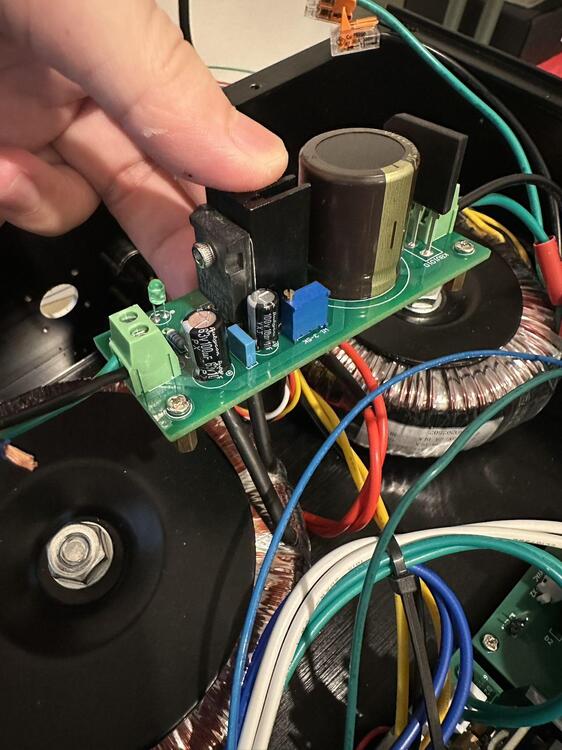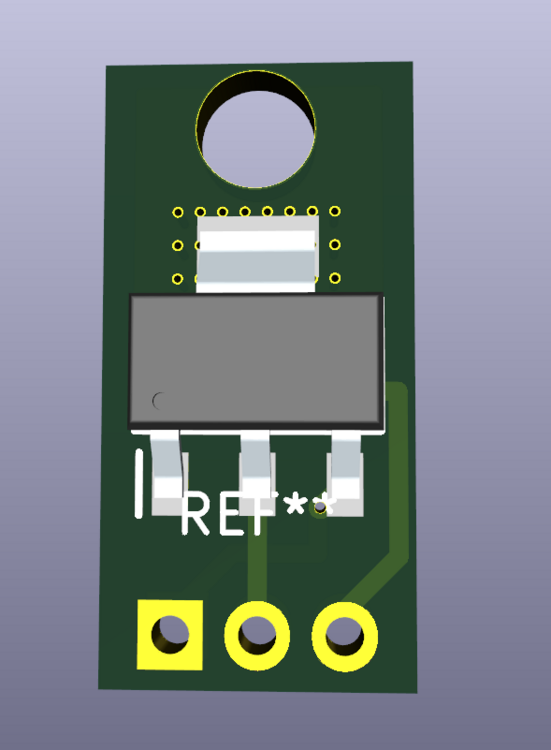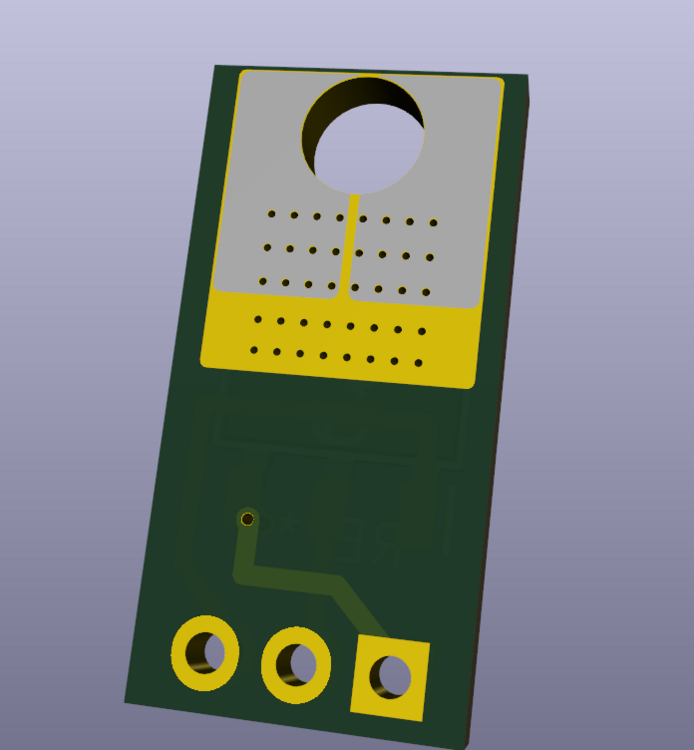-
Posts
28 -
Joined
-
Last visited
Recent Profile Visitors
The recent visitors block is disabled and is not being shown to other users.
Shawn's Achievements

Member (2/6)
29
Reputation
-
Making a soft starter module with switchable voltage function. No screws required if attached to the AC socket directly.
-
So complicated. Like the volume mute function.
-
Yes. The machine is from Snapmaker, and I am planning to get the Langmuir. Links here. https://www.snapmaker.com/en-US https://www.langmuirsystems.com/mr1
-
Okay, two months since my last post -time to dive deeper into the enclosure. I spent the past two weeks designing, ordering materials, and milling all the necessary holes. After breaking two milling bits in the process, here’s the result! The upper panel features over 30 screw holes for the amp boards and power supply. The transformer is planned to be mounted in the center using an M8 bolt, along with an isolated cover. Most of the screw holes are chamfered (using a chamfer milling bit). The square holes are designed for the transformer wires to pass through. The tapping work was manually done. Here’s the hole for the volume pot. The pot can be installed upside down to provide more clearance. I used an end milling bit, which resulted in this textured finish. The side panel will house the 10M90S without heatsinks. The plan is to transfer the heat directly to the enclosure. The enclosure dimensions are 430 x 80 x 330mm with an 8mm thickness. Two XLR input holes. Hole for the EMI AC inlet socket. I’ve realized that I might need a more professional CNC milling machine, but my garage just doesn’t have the space for such a large machine. Milling is really fun and incredibly satisfying.😆 How about going even further next, let`s say a fully CNC block enclosure (I am planning it right now).
-
Okay. After multiple checks for the occasional humming issues for a week. I finally learned the lessons. Separate each channel into individual space connectors. The two EL34 heater cables can`t go through the same connector(or be too close). The two 460V rails may have interference with each other, but I don`t have the knowledge to explain it.
-
Edited and fixed.🤞 I will work on the CNC enclosures next week. The drilling hole patterns will match any layout versions from .2~0.23. Just send the Gerber to the factory, Can`t wait to listen to it.
-
Done. Credit to JoaMat. Instruction again for 20B-V4 each channel: 1. Remove JP1~JP3(JP1 on the back which is connect Pin 1 & 3). 2. Remove two 220 ohms resistors. 3. Remove the right-hand side 22k ohms resistor. 4. Wiring the two pads which are marked as 20BV4. 5. Separate heater power supply. Based on layout ver.23. Hope this instruction can help someone keep investing in their mini T2.😊
-
Here is the draft based on your description. Regarding No.5, Should I pull the right-hand side(picture below) Pin5(G1) also to the resistor string between 120K and 300K resistors? Also Could you double check if there is anything I missed? Ignored the blue traces that go to KSC2690A and O-. I will be working on the new layout after making sure it is correct. You know what? You are at another level of speed. I was thinking about your description and gonna say the zero jumper is the solution and you did it!
-
The size is impressively small. What is the heat generation of it? Excuse me for one more question, JoaMat. Here are the socket views of 6CA7 and 20B-V4. To convert the 6CA7 to 20B-V4: 1. Pins 1 & 2, Pins 6 & 7 will be supplied by 5VDC instead of 6.3VAC. 2. Each 20B-V4 needs to be powered by separate supplies. 3. The Pin 8 which is CT on 20B-V4 remains the same since it's the Cathode on DHT. 4. Disconnect Pin 4 Please correct me if I'm wrong. Don`t really want to massive and fry those expensive tubes. Don`t know what to do with Pin1(G3). And there is a 220Ohms resistor between Pin 3&4 and 22KOhms between Pin 2&5, Do I need to change it?
-
Not original from me. I found it on Alibaba and made some changes to it. Here is the schematic I drew it under 10 mins. Well... not perfect but readable. The size is 96mm*35mm. Still can shrink it down by removing the heatsink and attaching it to the chassis. What is the size of your DC-DC converter? And your pics remind me I have a bunch of 20B-V4 sitting in my garage for yrs. How do you convert the circuit to adapt 20B-V4?😳 AC Out should be DC Out.
-
Thank you so much for sharing the pictures. After checking everything, I dont have any mismatches. BTW there is a wire cut in your back here but I believe it's the software problem. I still have space for two regs in the PSU case. Mounting the LT1083 to the case maybe a good idea to shrink the board even smaller. I noticed the time for balance to be stable became longer when you used DC heaters.
-
I have the same issues with OP27. The OPA197 seems to be more reliable but still has a chance of going wrong. According to my experience, those circumstances may be relative to falling: 1. Kerry Design PSU with HV delay On. The +220V will keep at ~+20V and get back to +220V after 40 secs. In this case, it may somehow overload the offset servo for a while. 2. If the three high-volt sources are not engaged at the same time. I forgot to plug in +220V, after plugging it in, it burned my OPA197. 3. Switch off the amp and turn it on immediately. It happened to me once. I lack the knowledge to analyze the falling but those are my experiences after burning a couple of the OP27s and OPA197. The OPA197 has a higher tolerance of supply voltage(36V) with protection. After a few hrs troubleshooting the left channel humming issue, it seems like it is relative to the left heater wire of EL34, When I touched and wiggled it, the humming tone changed. I guess the parasitic capacitance changed when I touched it but not sure since the other channel is totally fine without the humming issue. The two pairs of heater wires came from the same space connector with different windings. Don`t know if it is bad grounding or not.☹️ In this way, I made this(attached below), and it somehow fixed my problem. LT1083( 7.5A Max output at 5V) since I have it on hand. The good thing is the voltage drop is 1V which means the 6.3VAC can be accepted as input without any problems. The bad news is the heatsink is super hot and I have to redo the layout and get the larger heatsink instead. Still don`t know how the heater AC Coupled to Signal circuit.😑 Joatmat, Can you take a screenshot or photos of the empty left channel board(Front and Back) by any chance? There may be something wrong with my board layout.
-
One of my OPA197 had a sparking firework show and died today. It happened when I switched on and off, then on the amp quickly. I guess it is the ripple current or something which turns out the mandatory of a soft starter. Fortunately, I have a bunch of OPA197 in my hand. Swapped and got it back. The other thing I realized is that I have trouble with the tiny humming in my left channel. The grounding is probably bad since when my hand gets close to the left EL34, I do not even touch it, and the humming reduces and disappears. Any ideas?
-
How about something like this with the aluminum oxide isolation pad + screw insulator. It can be mounted just like the KSA1156 to the L-bracket or straight to the enclosure.
-
You may need this for stn9360 plus the aluminum or copper board. https://www.fischerelektronik.com/web_fischer/en_GB/heatsinks/C04/Heatsinks for D PAK and others/$catalogue/fischerData/PG/FK256/search.xhtml The KSA1156 is abandoned by Mouser. But other suppliers still have some in stock. IXTP01N100D is out of stock as well.☹️ 2SC3324 can be replaced by 2SC2713 with higher noise as a compromise.



